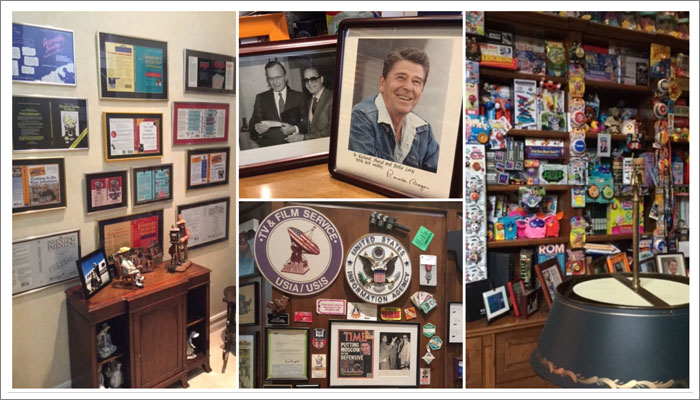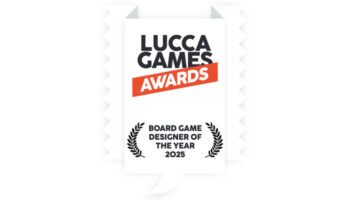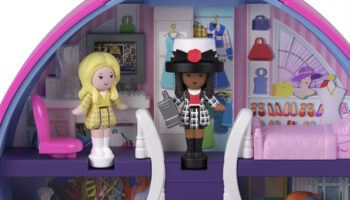Legendary industry veteran Richard C. Levy on Furby, creative kryptonite and why the biggest risk is not taking a risk at all…

Richard C. Levy has over forty years in the toy industry and 200 inventions to his name. Specialising in collaborative invention, product development, and licensing, we discuss follow up, three things that kill creativity, and why nobody really knows anything…
Richard C. Levy… Thanks for making time for us. Let’s start big: For what would you most like to be known?
I’d like to be known for my unwavering commitment to family, friends, honesty, politeness, fair play, hard work, quality product, and caring for how my choices impact others. I’m all about the human connection.
Wow. Well, you’ll be pleased to hear that’s how your reputation precedes you. Growing up, Richard, with which toys and games did you tend to play?
My favourite toys were Dinky and Matchbox. My Dad was counsel to a large toy wholesaler. Every Friday night, he’d bring my brother and me vehicles to play with while in the car driving to Grandmother’s home for dinner. My favourite board game was, and still is, Parcheesi – Ludo in the UK.
Parcheesi is supposedly ancient, isn’t it? But still your favourite?
Yes! Even as we self-isolate today, I still play Parcheesi almost nightly with our daughter, Bettie, who’s visiting during the pandemic… It is said to be ancient, yes. In fact, on a trip to India once, I found myself in the centre of the courtyard where Akbar the Great and his courtiers played an early version…
They say sixteen slaves wore the players’ colours, representing the pieces, and moved to squares according to the throw of the dice. The Emperor took such a fancy to the game on this scale that he had a Parcheesi court constructed in all his palaces.

Your background includes work in film and TV. What are the most-vital lessons you learnt in that career?
After graduating Emerson College in Boston, my first job – at 21 – was with Paramount International Films where the president took me under his wing. He rotated me through various departments, e.g., sales, publicity, marketing, advertising, etc. and then sent me to the Paramount office in Panama City, R.P. The Panama office managed Central American operations… He felt that area would provide me the most diverse opportunities given the number of countries.
After my Paramount stint, I worked for Avco Embassy Overseas Pictures, where I set up the company’s first foreign advertising and publicity department. Between Paramount and Embassy, I worked on marketing, advertising and publicity campaigns for 30 films, including The Graduate, The Producers and The Odd Couple. My feature-film experience was an advanced Ph.D. in Showmanship!

Good grief! That’s an incredible C.V. – and you’ve not even started in toys…
No, that’s all to come! Then during the first Reagan administration, I was appointed Deputy Director of the U.S.I.A. TV and Film Service in Washington, D.C. Our “clients” were American embassies around the world. Supervising a staff of 250 professionals, two broadcast TV studios, and a $60 million budget, honed my management skills. I also produced many documentaries, the last one being the life of Hal David, the American songwriter. It’s titled ‘Expressing a Feeling’ and can still be viewed easily on YouTube.
I’ve a bit of time for David and Bacharach; I’ll check it out! And from documentaries, then, how did you get into the toy-and-game industry?
A relationship with a childhood friend of my wife – Sheryl – and an electronic genius that he employed, resulted in our first toy. It was an electronic spaceship; our patented gravity switch would accelerate and decelerate the engine sounds, depending upon the toy’s attitude. I named it Star Bird.

Star Bird? Wait a second… I think I had one! You lifted it up and it made a “taking off” sound? And it was modular; it made different ships?
Yes! You got it! You had one?
I had one! For sure! Loved it; loved the sound, the ever-ascending tone! So Star Bird was yours; that’s great! How did you that get to market?
I took it to Milton Bradley, the game publisher… I read in a trade publication that MB was developing electronic games, so we knew they could read large-scale, integrated-circuit schematics. I didn’t know that game companies do not license toys! It was fortunate that I didn’t know this because MB quickly licensed Star Bird and went on to sell over a million units in the first year.
Including one to my mother! So she was literally one in a million…
We presented Star Bird after Thanksgiving and MB had it at February 1978 Toy Fair. We didn’t even know there was a NY Toy Fair when we jumped into the business.

Amazing! I love that you stumbled into it! So your first game was the know-the-slogan game Adverteasing. How did that come about?
I read in The Washington Post about the 150th anniversary of Proctor & Gamble. A side bar listed many of its slogans; for example, “Look Ma, No Cavities”; “The Quicker Picker Upper”; “It Floats” and so forth… I said to Sheryl – who is my wife, business partner and CFO of RCL&A – “What do you think of when you hear, ‘All the News That’s Fit to Print’”? She responded, “The New York Times”. “What about “Plop Plop, Fizz Fizz”? “Alka-Seltzer” she said… I knew I was onto something.
Sorry; when is this?
This is 1987… So Trivial Pursuit had set the table for adult, social-interactive games. This gave me confidence that a game called Ad Infinitum, The Game of Hooks, Lines and Snickers would stand a chance.

I prototyped the game for less than $20 and began to pitch it. Every game publisher on my target list turned it down. I was told that people don’t care about advertising. But I knew – from extensive testing – that people had hundreds of slogans and jingles seared into their brains, and friends enjoyed testing my game at pizza parties we organized.
One day, I heard about Cadaco, a small game publisher in Chicago. I had nothing to lose. I shipped off the prototype. A week or so later, the president of Cadaco called to say they wanted to license the game… If we could provide the content by mid-summer, they’d start running the game in August. I was thrilled. However, I cautioned, “The game needs some fine-tuning”. I’ll never forget the president’s reply: “You have a choice. We can sell a million Fords, or wait for a Cadillac.” I told him how much I loved Fords!
And how did it do, given that people don’t care about advertising?
It sold over a million units in 1988. Cadaco took the bold move to have no artwork on the front panel. It was just a red field, with Adverteasing in white lettering. The game became so popular that we were asked to quickly turn around an edition called Adverteasing, Jr. for younger players. It was also licensed overseas, in most countries under the trademark Slogans.
What did you learn from that first experience that still shapes your thinking?
What lessons did I learn? To break rules! I always say: Don’t be afraid to make mistakes. Just do something! The biggest mistake is not making a mistake. The biggest risk is not taking a risk.
Perfect! I was hoping you’d give us a soundbite there! You’re also on the record as saying you “Have more scars than medals…” So how do you handle rejection?
Here’s how I handle rejection… Unless a company points out a fatal flaw in a submission, a “no” to me means, “not yet”. I never let rejection shake my confidence. Rejection is inherent in the process. A submission is rarely taken by the first company to see it.
Oscar-winning screenplay writer William Goldman said of the movie business, “Nobody knows anything”. It’s no different in toys and games. Not one person in the industry knows for certain what will work. Therefore, inventors should never compromise their vision because someone pretends to know better.
Your other games include Men Are from Mars, Women Are from Venus for Mattel. It’s sold over a million units… Not an obvious choice for a boardgame, though. How did that come about?
The idea of branding a battle-of-the-sexes game with Men Are from Mars, Women Are from Venus was triggered when in 1997, John Gray, the author, was the subject of a two-hour television special on the ABC Network, a very long profile in Time magazine, and his book was dominating best-seller lists.

I reached John through his publisher, HarperCollins. Thankfully, John controlled the ancillary rights to the book. I didn’t have to work through the publisher. It’s always best to go directly to the IP owner… I pitched the idea for an adult, social-interactive game and suggested key deal points. He liked the sound of the business opportunity, but said he needed to discuss it with his lawyer. I ended the call with a Hail Mary; “The time is now, John, and I’m the one that can get it done.”
I hung up the phone and said to Sheryl, “It’s over. The lawyer will kill the deal.” A few minutes later my phone rang. It was John. He said his lawyer is in Europe and unavailable. He further said that he liked the sound of my proposal and it was given the green light. Mattel sold over a million copies of the game.
You really do have a nothing-to-lose attitude! So – “elephant in the room”, as you describe it; you’re part of the team that worked on the original Furby… Hasbro’s now sold more than 75 million of these animatronic critters. What’s their appeal?
Furby is all about the suspension of disbelief. It was designed to let you believe it was alive. In addition to David Hampton’s brilliant programming, scripting, and choreography, I believe the eyes had a great deal to do with its charm and popularity…

It’s almost inconceivable that nobody knows what we’re talking about, but just to be sure: the eyes on a Furby are large, round and very characterful…
Yes… William Shakespeare called eyes the windows to the soul. Eyes don’t lie. They show the truth, no matter what face you put on. Just like body language, our eyes say more than we ever could with words. Great care was taken in selecting the eyes.
And – I’m very curious – when you were working on Furby, did you think, “This is it!” Or was it just another idea in a sea of ideas?
I always saw the potential in Furby, but I was working 24/7 with David, the Tiger Electronics team, then – after the acquisition of Tiger – Hasbro R&D, and various freelance talent hired to bring Furby to life mechanically. Tiger and Hasbro, respectively, made Furby a priority, with senior management answering every time I called for assistance. I’d sum up the Furby development experience with these words: “The finest steel goes through the hottest fire.”
Great! And in terms of people’s expectations, how did Furby do?
The president of Tiger told me that if he could sell 250,000 units the first year, he’d consider Furby a hit. Well, between October and end December of 1998, Furby sold four million units.
Inconceivable! Richard what, to you, is creative kryptonite?
Three things come to mind… First – ego! Inventive people, by profile, hate to be criticized for any reason. Actually, they’re usually critical of others. I’ve seen too many projects killed by out-of-control egos.
Are there ways to avoid that, or is working with an egomaniac inevitable?
Well… My success continues to be the result of collaboration with unselfish, highly-talented, and creative associates. These are people willing to face the frustrations, rejections, and seemingly open-ended time frames inherent in any product development and licensing exercise.
I’ve also been fortunate to have worked with creative and courageous executives willing to believe in me and commit to our products. Advertising legend Bill Bernbach summed it up best when he said, “An idea can turn to dust or magic, depending upon the talent that rubs up against it.”

And what are the other two things?
Paranoia and greed! With greed, there’s a saying: pigs get fat, hogs get slaughtered. And with paranoia, I think there are two kinds of amateur inventor: the paranoid and the more paranoid! If you don’t trust a company, don’t approach them. But if you’ve made an approach, don’t send messages to the company, or your associates, that you don’t trust them.
Very wise. Assuming an amateur inventor made an approach, though, and that they can get in front of the decision-makers, what advice would you give inventors about pitching?
There’s practical stuff: Know your product intimately… Make it sing. But also remember that nothing is as powerful as the truth. Be honest when it comes to your item, and how you conduct business. If you’re fortunate enough to get an executive’s attention, strive for the heights of quality and professionalism. In other words, don’t play the Big Room like a lounge act.
On occasion, some inventors seem lost following up on a promising pitch. How can people keep a dialogue going without irritating a potential licensee?
Once you’re no longer in the spotlight and everyone’s returned to their desks, all kinds of disparate forces come into play. The idea you presented may not even be remembered shortly thereafter – prototypes and videos notwithstanding. It’s not enough to pitch an idea. It’s important for the inventor to pitch in, too…
Meaning that they have to continue working with the licensee?
Yes. If the company welcomes your participation in the process, the dialogue will continue throughout the review. If you’re not involved, and there’s no option agreement setting out a time frame, send an email for an update after – say – a couple of weeks… But don’t become a nuisance.
Which question have you never been asked in an interview that you’d quite like to answer?
I’ve been asked about every facet of the business from the inventor’s point of view. One message I’d like to communicate, however, is that nothing is as easy as it looks. Everything takes longer than you think. You’ll win some. You’ll lose some. Some games will be rained out; always suit up and stick with it.
You’re the author of twelve books, including the third Edition of your excellent ‘Toy and Game Inventor’s Handbook, which is available as an exclusive amazon eBook. If you were to write your autobiography, though, what would you call it?
Never Give Up, Never Grow Up!

Oh, my days! Yes; brilliant! Listen; let’s wrap this up so you can start on that! Okay, last question: what’s the most interesting thing in your office?
I’d say the office itself! I work in an office surrounded by shelves bursting with my toys and games on one side and memorabilia and photos from my previous careers on the other. At the entry way to the office is a wall that displays the covers of the books I authored.

I’ve designed the office to immerse me in our product, symbolize productivity, and energize me for the tasks ahead. When I enter the office, I have only two purposes in mind: to create, and to pitch our latest innovations. It’s this focus that produces results.
Richard, this has been great! Thank you so much – I know not only how busy you are but also that America is going through the wringer and people have more important things to do. Thank you so much for your time!
Star Bird Command Base image courtesy of John Muir, http://www.bugeyedmonster.com
—-
To stay in the loop with the latest news, interviews and features from the world of toy and game design, sign up to our weekly newsletter here






















